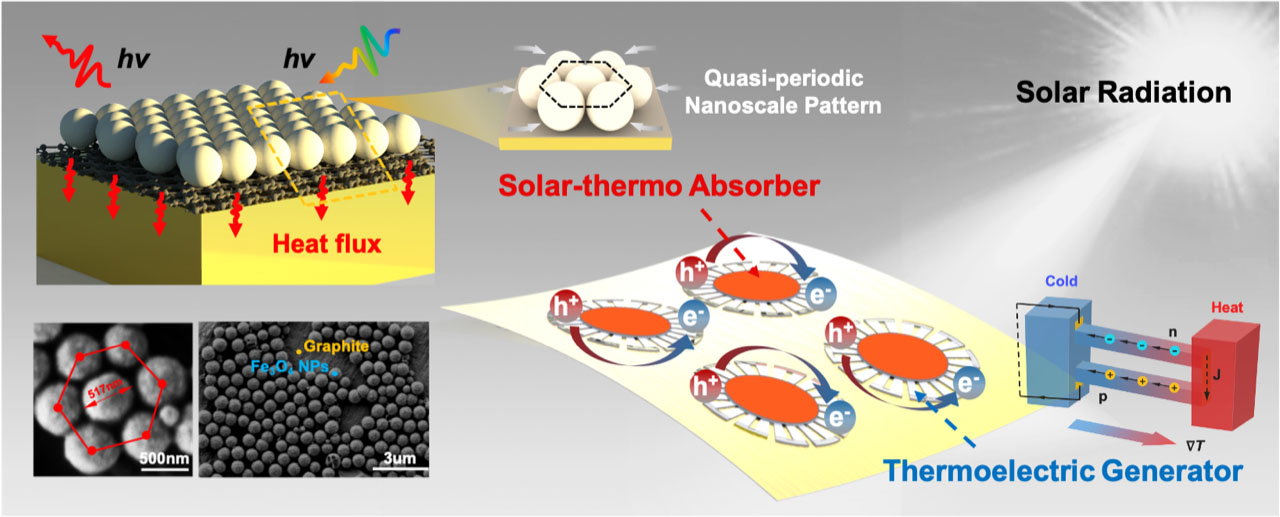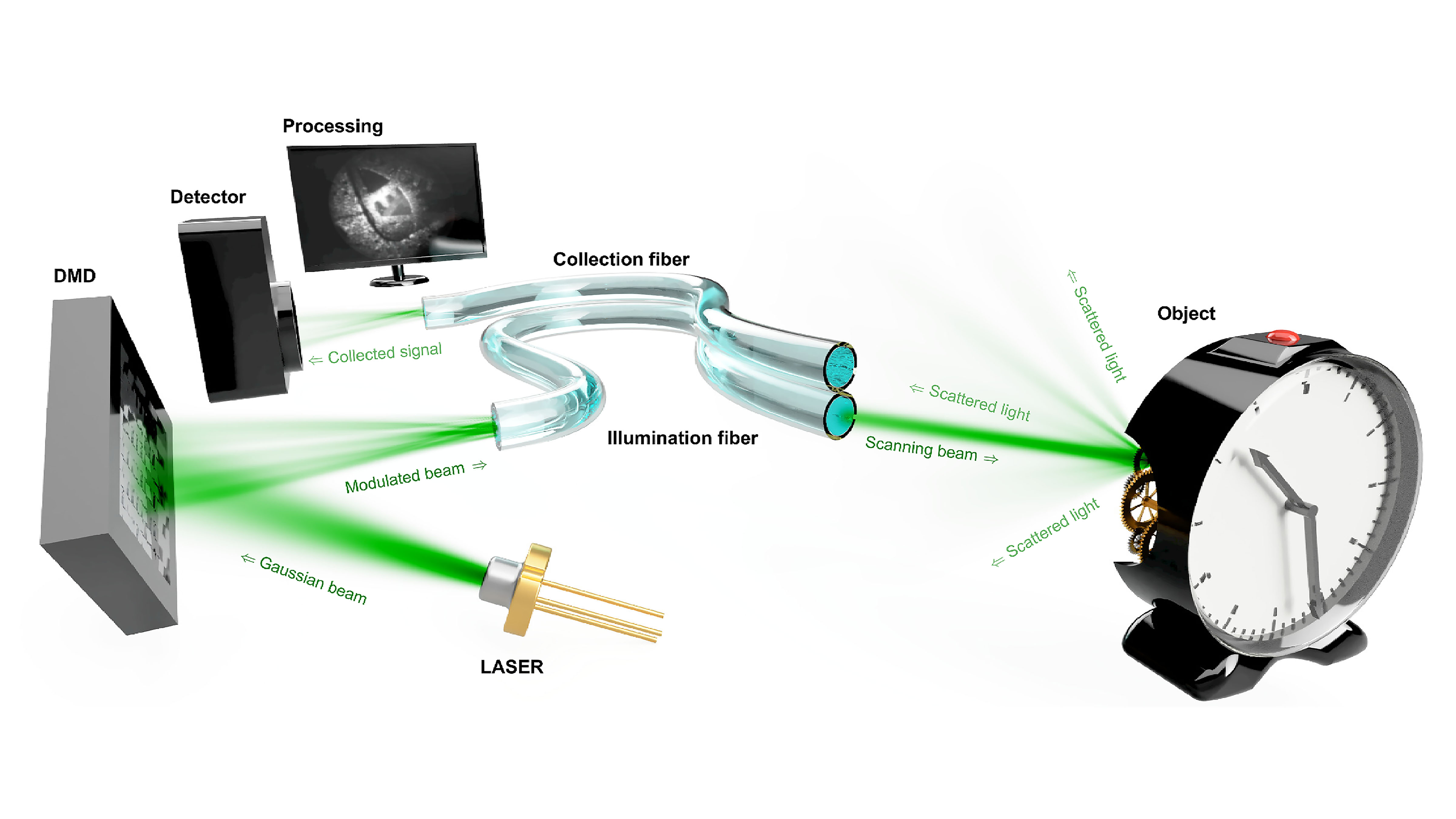In APL Photonics, researchers design a solar harvester with enhanced energy conversion capabilities. The device employs a quasiperiodic nanoscale pattern, meaning most of it is an alternating and consistent pattern, while the remaining portion contains random defects that do not affect its performance. The fabrication process makes use of self-assembling nanoparticles, which form an organized material structure based on their interactions with nearby particles without any external instructions. Thermal energy harvested by the device can be transformed to electricity using thermoelectric materials.

